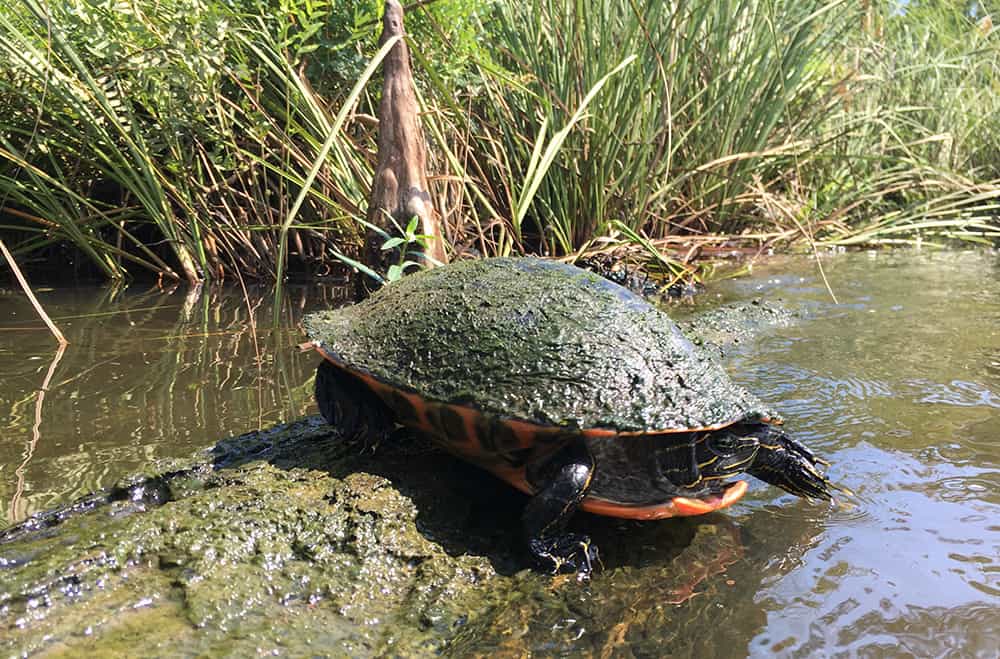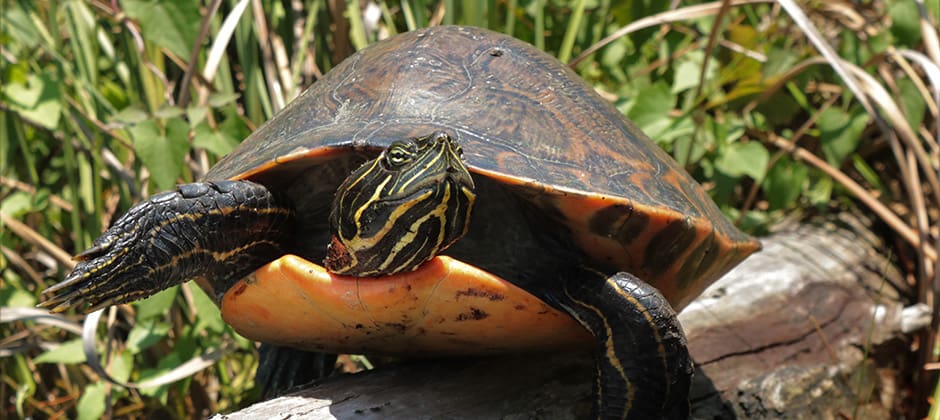Share this article
Alabama red-bellied turtles face hybrid threat
Habitat loss is one of the main threats facing Alabama red-bellied turtles, but it isn’t the only one. Researchers found that hybridization is reducing the species’ genetic uniqueness.
Found only in river systems near Mobile, Alabama, the turtles are considered endangered by the U.S. Fish and Wildlife Service, due in part to environmental changes where they occur.
“The habitat is changing,” said Ylenia Chiari, an assistant professor at George Mason University in Virginia. “There are a lot of females that get killed because they cross some of the major roads.”
But researchers weren’t very clear about the genetic health of the species (Pseudemys alabamensis). In fact, the entire genus is a little unclear taxonomically. Species often hybridize, and the boundaries that separate them aren’t well delineated.
For a study published recently in Ecology and Evolution, Nickolas Moreno—Chiari’s master student when both were at the University of South Alabama—set out to capture red-bellied turtles, also known as Alabama red-bellied cooters, across their range straddling the Alabama-Mississippi state line. Using a baited water trap that let turtles in but not out, Moreno searched areas where these turtles had been found historically, as well as other areas that appeared to have suitable habitat features. He also tapped into a network of herpetology groups in Mississippi and Alabama on Facebook. They would help by bringing the turtles to park offices, where wildlife managers would extract blood samples and send them to Moreno.

In parts of their range, Alabama red-bellied turtles are hybridizing with other species. Credit: Nickolas Moreno
Chiari and her team then began to analyze the genetic data of every sample they got. They found that many Alabama red-bellied turtles were hybridizing with two related species—river cooters (P. concinna) and coastal plain cooters (P. floridana)—particularly in the Mobile Tensaw Delta.
“The closer you go to Florida, the more concinna and floridana you find,” Chiari said.
The analysis also revealed that, even apart from hybridization, the Mississippi and Alabama populations are genetically distinct. This distinction could be due to large bodies of water that have separated the populations over time.
Chiari believes that a lack of mating options within their own species is likely prompting the hybridizations. The DNA analysis revealed some populations had very low genetic health suggesting they might not be doing so well.
The team also found a case of hybridization between an Alabama red-bellied turtle and a Peninsular cooter (Pseudemys peninsularis), a species typically found deep in Florida, far from the Alabama red-bellied turtle range. That case probably involved a released pet, Chiari said.
The pet trade is among the problems affecting Alabama red-bellied turtle conservation, alongside emerging concerns from chemical pollution and climate change. Increasing temperatures are raising the sea level, which bumps up the salt content in many of the brackish coastal areas and may make them less suitable for Alabama red-bellied turtles.
For Chiari, the study highlights the need for more focused conservation attention. Some wildlife reserves do good work protecting these turtles, she said, but coordinated efforts are lacking across their range.
“It keeps not being a priority species in terms of actions,” said Chiari.
Header Image: Alabama red-bellied turtles are considered federally endangered. Credit: Nickolas Moreno








